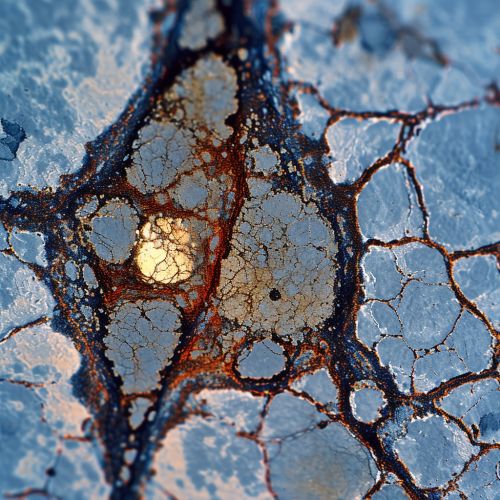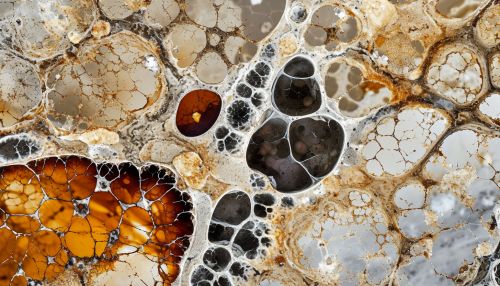Fanconi anemia
Overview
Fanconi anemia (FA) is a rare genetic disorder that leads to bone marrow failure. It is a complex condition that involves multiple body systems and is characterized by a heightened risk of cancer and other serious health problems. The disorder is named after the Swiss pediatrician, Guido Fanconi, who first described it in 1927.
Etiology
Fanconi anemia is caused by mutations in genes that are involved in the repair of DNA damage. To date, mutations in at least 22 different genes have been associated with the condition. These genes encode proteins that interact in a common pathway, the FA/BRCA pathway, which is crucial for the repair of DNA interstrand crosslinks. Mutations in these genes disrupt the function of this pathway, leading to the characteristic features of Fanconi anemia.
Genetics
Fanconi anemia is inherited in an autosomal recessive manner, which means that an individual must inherit two copies of the mutated gene, one from each parent, to develop the disorder. In some cases, the disorder is inherited in an X-linked recessive manner, which means that the mutated gene is located on the X chromosome. In these cases, males are more severely affected than females.
Clinical Manifestations
The clinical manifestations of Fanconi anemia can vary widely among affected individuals. Some individuals may have physical abnormalities that are apparent at birth, while others may not develop symptoms until later in life. Common physical abnormalities include short stature, abnormalities of the skin, arms, and hands, and developmental delays. Many individuals with Fanconi anemia also have hearing loss and eye abnormalities.
Diagnosis
The diagnosis of Fanconi anemia is often suspected based on the presence of characteristic clinical features. The diagnosis can be confirmed by laboratory testing that shows increased chromosomal breakage and rearrangements in cells exposed to a DNA crosslinking agent. Genetic testing can also be used to identify mutations in the genes associated with Fanconi anemia.
Treatment
The treatment of Fanconi anemia is aimed at managing the symptoms and complications of the disorder. This may include blood transfusions or bone marrow transplantation for bone marrow failure, surgeries for physical abnormalities, and regular monitoring for the development of cancers. Individuals with Fanconi anemia are also advised to avoid exposure to environmental factors that can damage DNA, such as radiation and certain chemicals.
Prognosis
The prognosis for individuals with Fanconi anemia can vary widely and is dependent on the severity of the symptoms and the presence of complications. With appropriate management, some individuals with Fanconi anemia can live into adulthood. However, the risk of developing cancers, particularly leukemia and solid tumors, is significantly increased in individuals with this disorder.
Epidemiology
Fanconi anemia is a rare disorder, with an estimated prevalence of 1 in 130,000 to 1 in 500,000 individuals in the general population. The disorder is more common in certain populations, such as individuals of Ashkenazi Jewish descent, due to the presence of founder mutations.
Research Directions
Research into Fanconi anemia is ongoing, with a focus on understanding the molecular mechanisms underlying the disorder and developing new treatments. Recent advances include the identification of new genes associated with the disorder and the development of gene therapy approaches for the treatment of bone marrow failure.
See Also


